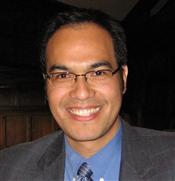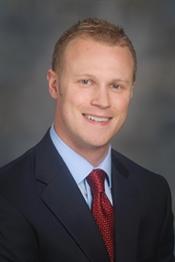Program Information
TG275 and Radiation Professional Workforces

D Schofield
P Johnson
L Fong de los Santos
W Newhauser
D Gress
D Schofield1*, P Johnson2*, L Fong de los Santos3*, W Newhauser4*, D Gress5*, (1) Saint Vincent Hospital, Acton, MA, (2) University of Miami, Miami, FL, (3) Mayo Clinic, Rochester, MN, (4) Louisiana State University, Baton Rouge, LA, (5) MD Anderson Cancer Center, Houston, TX
Presentations
SU-B-BRA|B-0 (Sunday, March 19, 2017) 10:30 AM - 12:30 PM Room: Ballroom A|B
Initial plan and weekly chart checks are a routine responsibility for the medical physicist. However, a literature review found limited published guidelines and standards for performing these tasks. AAPM Task Group 275 recently conducted a 103-item survey to assess the current trends in the checks performed. A review of the existing literature and an overview of the survey results will be presented. In addition, the survey results will be cross-compared as a function of demographic parameters including: facility setting, facility size, average time allotted for initial plan checks, record and verify system, the method used for conducting plan checks, and the reported culture of safety. Significant variations in the patterns of plan checks performed based on the selected demographic criteria will be discussed.
Learning Objectives:
1. Review the existing literature and guidelines for physics checks.
2. Describe the results of the TG-275 member survey.
3. Review patterns of variation as a function of demographics.
The medical physics workforce comprises approximately 24,000 workers worldwide and 8,200 in the United States. The occupation is a recognized, established, and mature profession that is undergoing growth and change that is driven by scientific, technical, and medical advances. Presently, the workforce is adequate to meet societal needs. However, data are emerging that suggest potential risks of shortages and other issues that could develop within a few years. Some of the factors influencing the workforce are well established, such as the increasing number of incident cancers thereby increasing workload, while others, such as the future utilization of radiation treatments and changes in healthcare economic policies, are uncertain and make the future status of the workforce difficult to forecast beyond the next several years.
This presentation will examine some of the major factors that govern supply and demand for medical physicists, discusses published projections and their uncertainties, and presents other information that may help to inform short- and long-term planning of various aspects of the future workforce. It includes a description of the general characteristics of the workforce, including information on its size, educational attainment, certification, and age distribution. Because the supply of new workers is governed by educational and training pathways, graduate education, post-doctoral training, and residency training are presented, along with trends in state and federal support for research and education. Selected professional aspects of the field also are considered, including trends in professional certification and compensation. We speculate on the future outlook of the workforce and provide recommendations regarding future actions pertaining to the future medical physics workforce.
Learning Objectives:
1. To become familiar with the general characteristics of the medical physics workforce in the United States.
2. To understand the factors that influence the supply and demand for medical physics workers.
3. To discuss projections of medical physics work and workforce.
4. To introduce strengths and limitations of the education and training pipeline of future workers.
Traditional ways to classify common diagnostic medical physics practice models (such as consultants, in-house or staff medical physicists, etc.) and practice settings (academic hospital, community hospital, free-standing center, etc.) no longer serve as an accurate means to characterize the work performed by diagnostic medical physicists in the modern healthcare environment. Furthermore, describing a service or offering as “comprehensive” may be intended to highlight the expertise of the individual providing the service, but may also imply that the service is unnecessary or excessively expensive. On the other hand, describing a service as “basic” may imply (favorably) that the cost is low, but also that the individual providing the service is less skilled or that the client is unwilling or unable to spend money or staff effort on anything which is not strictly required of them. Describing medical physics services as “basic” or “comprehensive,” or similar terms, is not helpful in moving forward.
Historically, diagnostic medical physics support requirements have been largely quantified by considering imaging equipment inventories and time requirements for routine testing. However, practice has evolved to include services and activities that do not lend themselves to effort estimates based solely on equipment inventories. The present and future needs for diagnostic medical physics services and staffing are best evaluated using a study that accounts for the breadth and depth of services needed to promote and sustain quality patient care; these services are provided today in diverse practice models and settings that will likely evolve further over time. Some medical physics services and activities can and should be quantified via a focused survey of the AAPM membership, while others are difficult and unnecessary to quantify precisely. Those that are less quantifiable are also often those that are novel, emerging, or have not yet become a universal standard practice in all institutions. As such, they are growth opportunities for diagnostic medical physics. The pace of change in medical imaging suggests that further changes will affect diagnostic medical physics practice sooner than such a study could feasibly be repeated. A model that is flexible will maintain some predictive capability if it can be used with new data as they become available, allowing this resource to remain relevant for several years even in the face of major new developments.
A new model for classification of diagnostic medical physics services is proposed and present: The Levels of Service (LoS) model.
Learning Objectives:
1. Recall recent challenges AAPM has encountered with collecting workforce data on the practice of diagnostic medical physics
2. Understand AAPM’s future approach to characterizing diagnostic medical physics work
3. Become familiar with pending AAPM diagnostic workforce report
Contact Email:




